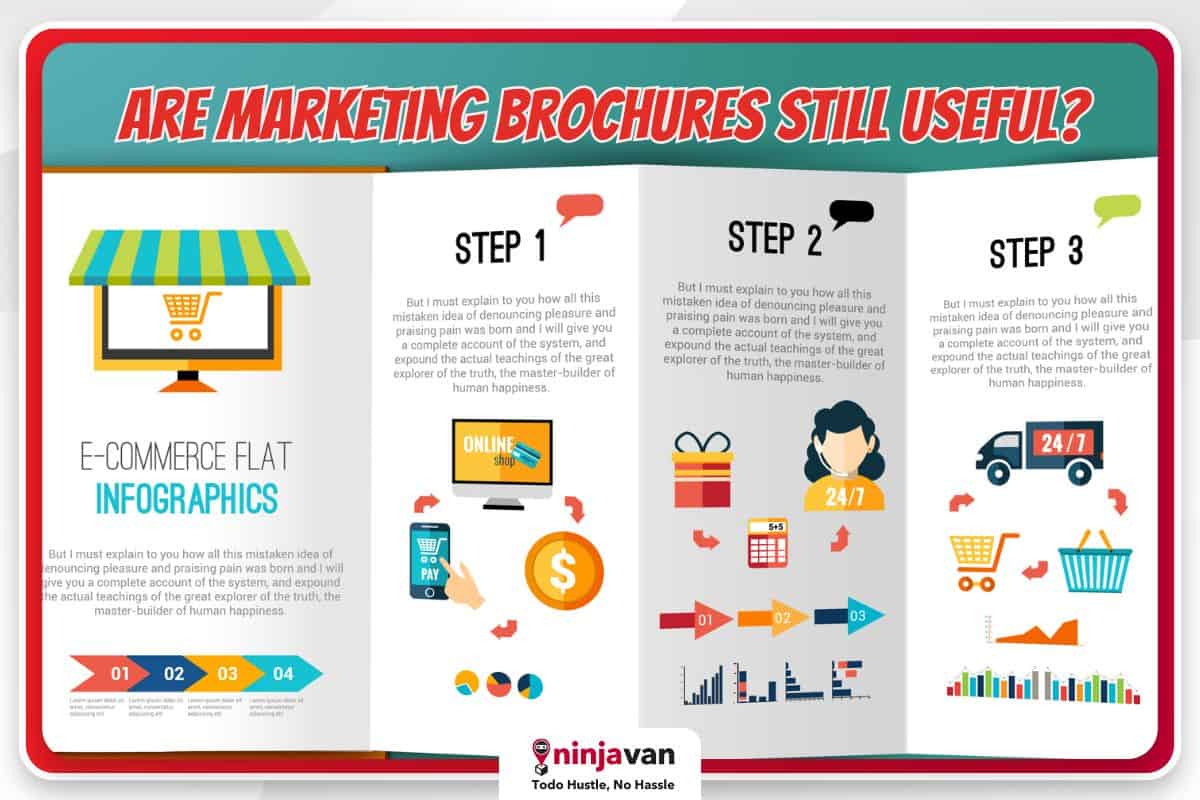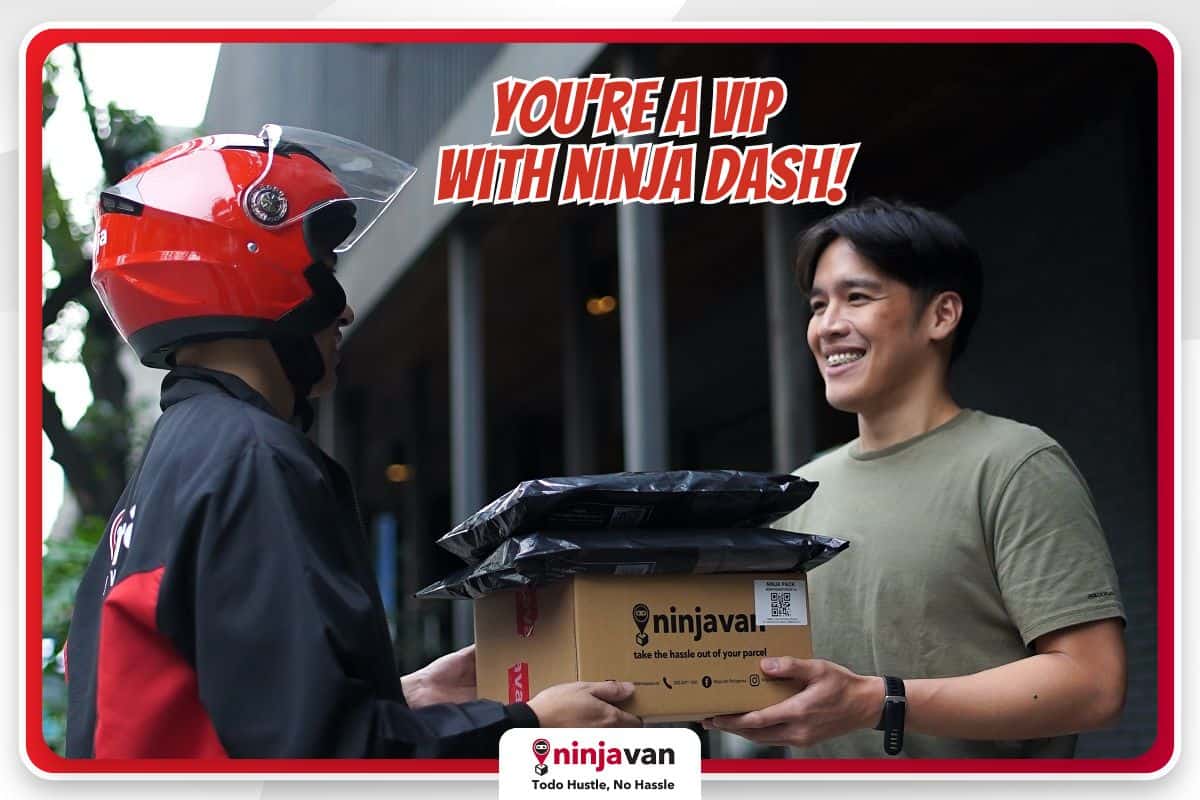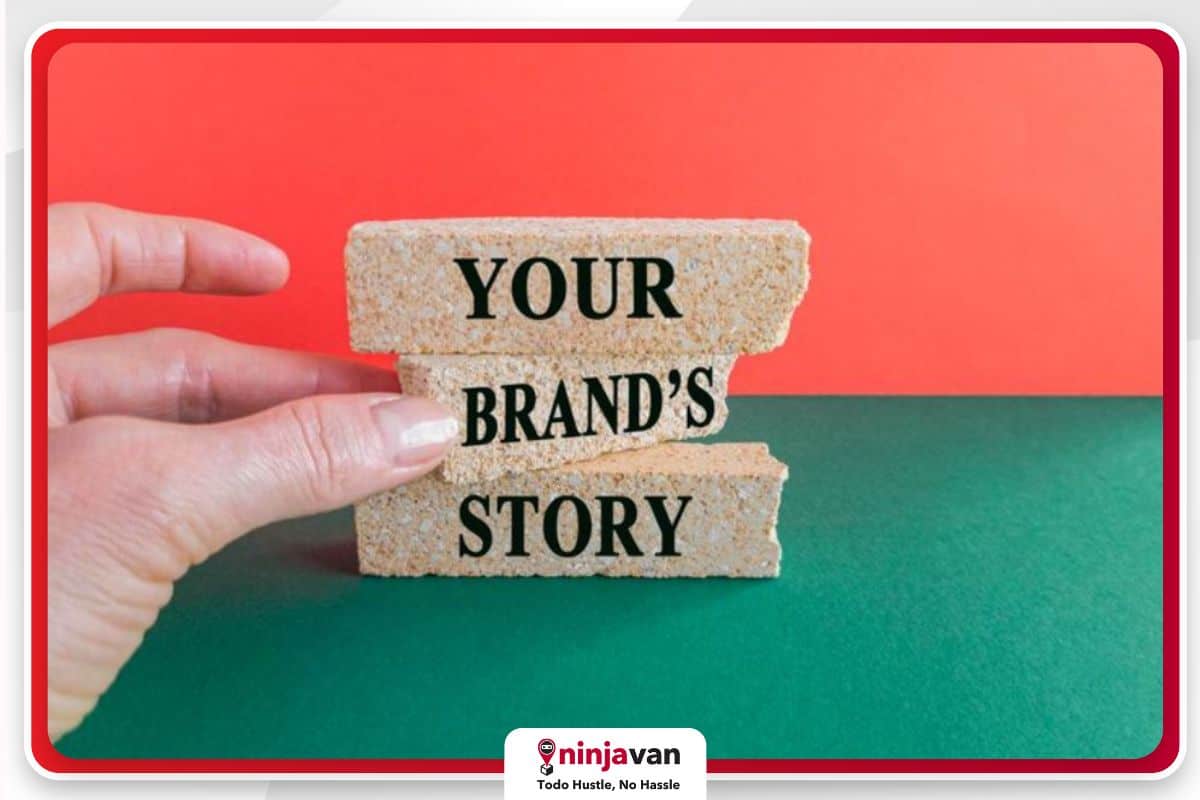We’re living in an era that’s mostly defined by digital marketing and social media ads, so one might wonder: are marketing brochures still relevant? The answer is yes!
As a tangible tool for more brand recall against crowded online platforms, marketing brochures are still a powerful way to engage audiences and convey your brand message.
Also read: Email Marketing Tips and Trends for 2024
What are marketing brochures?
Marketing brochures are printed collaterals that are designed to inform potential customers about your company’s products, services, as well as events. They typically include cohesive information, eye-catching visuals, and a call to action to encourage reader engagement and participation.
Why are marketing brochures important?
Tangibility: Unlike digital content, brochures provide a physical output that when done right, can leave a lasting impression on recipients. It’s a piece of paper that they can always come back to and not get lost in a sea of social media posts and ads.
Targeted reach: Brochures can be strategically distributed to your desired or targeted audiences. You can define who will receive your materials with specific demographics or locations, allowing your business to reach and communicate with your ideal audience directly.
Versatility: The design and content of your brochures are entirely up to you, this is why you can use it for just about anything. You can include an introduction to your brand, your products and services, information on shows, special events, and other campaigns.
Brand visibility: Through well-designed brochures, you can effectively showcase your brand identity, reinforcing brand recognition among consumers.
#NinjaTip: When it comes to getting your products to your customers, Ninja Van is your business’s trusted partner for seamless deliveries and logistics. Enjoy exclusive shipping rates and perks when you Sign up for a VIP Shipper account!
Best ways to use marketing brochures for businesses
Selling a product of service
One of the most traditional kinds of brochures are sales brochures. These are created for the primary purpose of selling products and services. This brochure includes a list of what your business can provide, all with an effective call-to-action to invite customers to make a purchase.
Teaching a concept
Informational brochures are also widely used to introduce a new concept or process to your audiences. This type of brochure sets out to teach your readers something about a cause related to your business that is important to them. For example, if you’re in the beauty industry, you can teach your customer about the importance of sustainability and using natural ingredients.
Even if the purpose of this brochure is not to sell products, this is a way to establish trust and loyalty between the brand and its customers. Essentially positioning your business as a reliable go-to for their needs.
Brand awareness
Most commonly, this brochure is used to inform audiences of who your brand is. The material must include the brand’s history, mission, values, and general information on products and services.
To make this more interesting and value-adding to potential customers, you can add a coupon code, or a fun perk when they bring the brochure to your store. Not only will they have more information about your brand, but they will also be encouraged to engage and potentially purchase from your business.
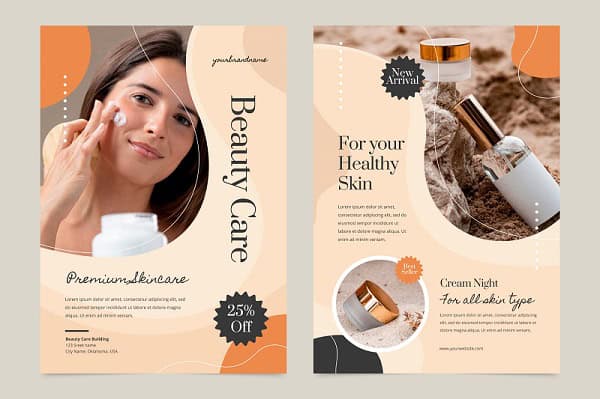
Elements of a good marketing brochure
Informative headlines: It all starts with an impactful headline. With informative and well-written copy, you can capture attention with clear and compelling headlines that communicate the brochure’s purpose.
A compelling story: Next, your audiences will appreciate and will get hooked with a good story. In this part, you can explain your brand’s journey or showcase customer success stories to establish an emotional connection with the audiences.
Scannable subheadings: To make the brochure easy to read and understand, it’s a good strategy to break down content into digestible sections with descriptive subheadings to facilitate easy navigation for audiences.
Eye-catching images: Aside from a good and catchy headline, another way to keep audiences engaging with the brochure is to incorporate high-quality images and graphics that complement the text and enhance visual appeal of the brochure. Some use infographics, charts, art, and other graphic elements and colors.
Strong call to action: Now that your audiences have an idea of what the brochure wants to communicate, having a call-to-action brings the spotlight back to the audiences as they have the opportunity to take a specific action, such as contacting your business, visiting your website, or making a purchase. Call-to-action texts are quick, bold and easy to understand.
Business contact details: Lastly, never forget to include your contact information. It must be prominently displayed for potential customers to reach out easily.
5 tips when designing a marketing brochure
1. Have a clear purpose
Identify what your brochure will be all about. By doing this, you can set a defined outline and achieve your goal more cohesively — whether that be for sales, educational, or others.
2. Prioritize clarity
Keep the layout clean and organized to avoid overwhelming the reader. Remember that your goal is to communicate a message and clarity makes that happen. In terms of technicality, allow white spaces around text and images to prevent visual clutter and guarantee readability.
3. Consistent branding
To achieve brand recall and awareness, it is important to maintain brand consistency in terms of colors, fonts, and imagery in the brochure. Be consistent through the whole document and other brochures you’ve done in the past.
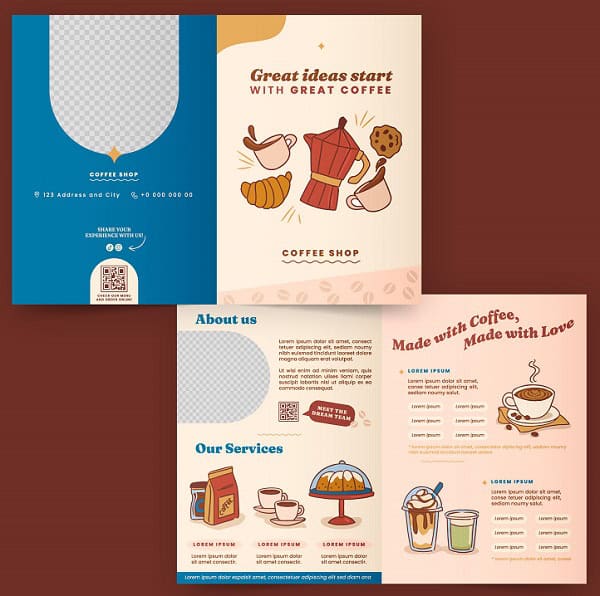
4. Choose the right paper stock and fold options
Select a paper type that aligns with your brand image and conveys quality. You can do this by exploring different kinds and suppliers you can partner with. Aside from paper type, you can also experiment with different folding techniques (e.g., bi-fold, tri-fold) to generate more visual interest and maximize space utilization.
5. Testimonials and reviews
Lastly, as mentioned earlier, you can never go wrong with actual stories. You can Incorporate customer testimonials or positive reviews to build trust and credibility for your brand.
Make your marketing brochure work for you
In a widely online ecommerce landscape, the classic marketing brochures are still relevant. To your audiences, these brochures serve as a tangible reminder of what there is to know about your business.
By following the best practices outlined above, your business can take advantage of brochures as a powerful tool to engage with your audience, drive sales, and ultimately, achieve their marketing objectives.
More marketing tips to boost your business:
Social Media Metrics You Should Be Monitoring
6 Ways to Engage Customers and Keep Them Loyal
AI Tools You Can Use to Create Creative Captions

